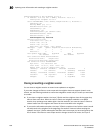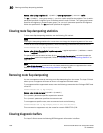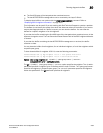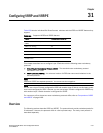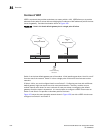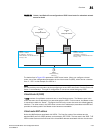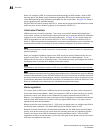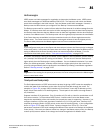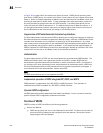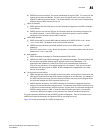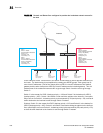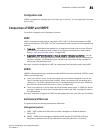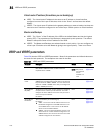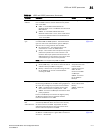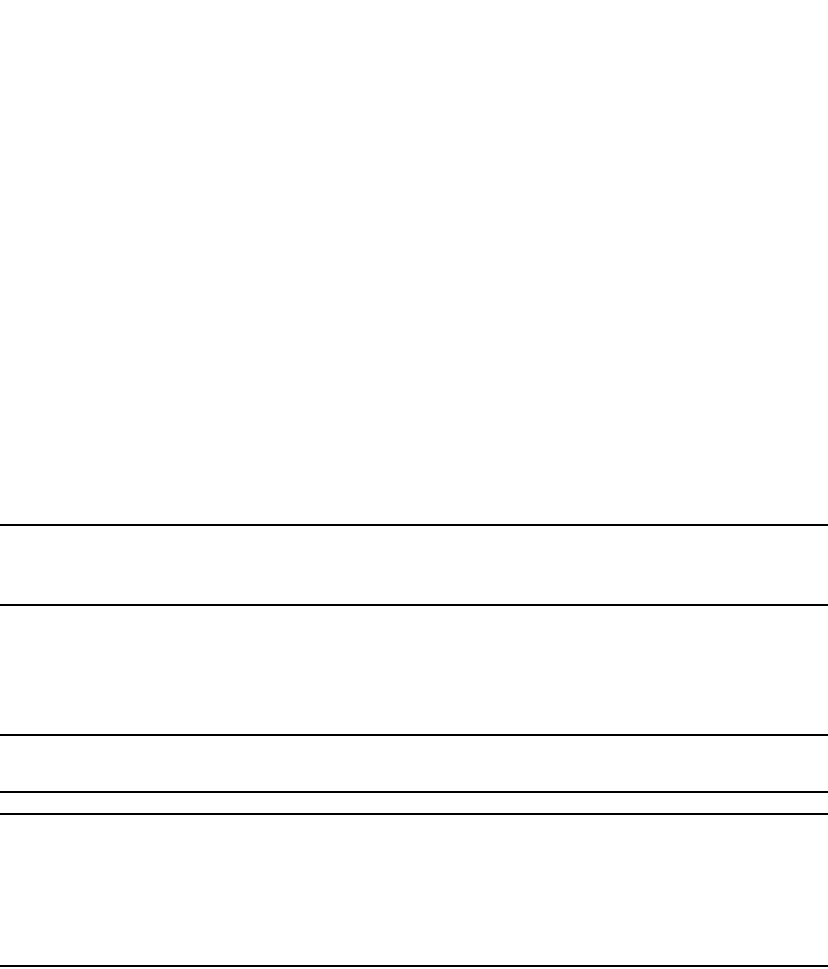
1104 PowerConnect B-Series FCX Configuration Guide
53-1002266-01
Overview
31
When you configure a VRID, the software automatically assigns its MAC address. When a VRID
becomes active, the Master router broadcasts a gratuitous ARP request containing the virtual
router MAC address for each IP address associated with the virtual router. In Figure 151, Switch 1
sends a gratuitous ARP with MAC address
00-00-5e-00-01-01 and IP address 192.53.5.1. Hosts use the virtual router MAC address in routed
traffic they send to their default IP gateway (in this example, 192.53.5.1).
Virtual router IP address
VRRP does not use virtual IP addresses. Thus, there is no virtual IP address associated with a
virtual router. Instead, you associate the virtual router with one or more real interface IP addresses
configured on the router that owns the real IP address(es). In Figure 151, the virtual router with
VRID1 is associated with real IP address 192.53.5.1, which is configured on interface e1/6 on
Switch 1. VRIDs are interface-level parameters, not system-level parameters, so the IP address you
associate with the VRID must already be a real IP address configured on the Owner interface.
NOTE
You also can associate a virtual router with a virtual interface. A virtual interface is a named set of
physical interfaces.
When you configure the Backup router for the VRID, specify the same IP address as the one you
specify on the Owner. This is the IP address used by the host as its default gateway. The IP
address cannot also exist on the Backup router. The interface on which you configure the VRID on
the Backup router must have an IP address in the same subnet.
NOTE
If you delete a real IP address used by a VRRP entry, the VRRP entry also is deleted automatically.
NOTE
When a Backup router takes over forwarding responsibilities from a failed Master router, the Backup
forwards traffic addressed to the VRID MAC address, which the host believes is the MAC address of
the router interface for its default gateway. However, the Backup cannot reply to IP pings sent to the
IP address(es) associated with the VRID. Because the IP address(es) are owned by the Owner, if the
Owner is unavailable, the IP addresses are unavailable as packet destinations.
Master negotiation
The routers within a VRID use the VRRP priority values associated with each router to determine
which router becomes the Master. When you configure the VRID on a router interface, you specify
whether the router is the Owner of the IP addresses you plan to associate with the VRID or a
Backup. If you indicate that the router is the Owner of the IP addresses, the software automatically
sets the router VRRP priority for the VRID to 255, the highest VRRP priority. The router with the
highest priority becomes the Master.
Backup routers can have a priority from 3 – 254, which you assign when you configure the VRID on
the Backup router interfaces. The default VRRP priority for Backup routers is 100.
Because the router that owns the IP addresses associated with the VRID always has the highest
priority, when all the routers in the virtual router are operating normally, the negotiation process
results in the Owner of the VRID IP addresses becoming the Master router. Thus, the VRRP
negotiation results in the normal case, in which the hosts’ path to the default route is to the router
that owns the interface for that route.



